My first touch with MS-DOS and therefore with the system mistakenly called "PC", was with a Tulip computer running MS-DOS. It was an old XT computer.
Now how did it all begin? The oldest computer I ever found myself running a system like DOS was this little beauty:
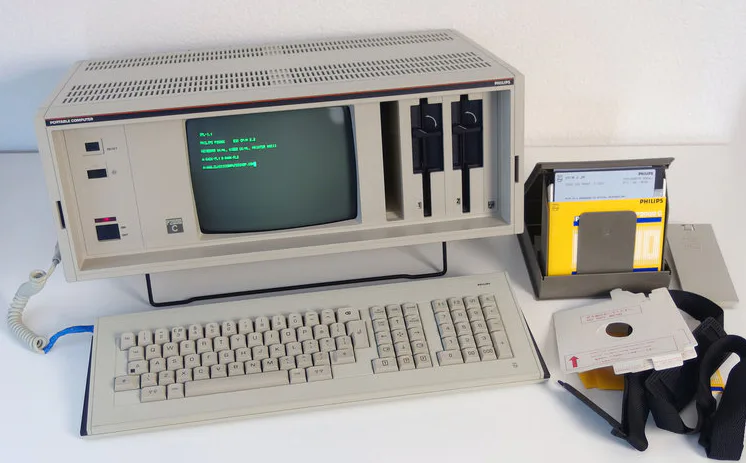
Believe it or not, but this was a PORTABLE computer. Yeah, this was the predecessor of the laptop. Hence the small screen, with the disk drives besie it, and you could easily use the keyboard as a cover (keys inside), and then on the other side was grip in order to carry it around. Now this computer never conquered the market or anything, but still it did play a role in the history of computers. Now I did show you a few things about the P2000T. The big difference however is that the P2000T was a very typical home computer, using BASIC as OS (yeah, the programming language). The computer above is a P2000C, and was meant for business usage, and thus a completely different approach was taken on the OS. It was actually an OS very similar to DOS. Microsoft could never be "blamed" for being original, folks, trust me.
Now you may wonder what those cardboard disks were for. They were always put in the disk drives when the computer was not in use and had to be transported. The disk drives of the time were rather fragile, so those cardboard disks had to protect the drive, against any damage transport could cause.
Now the very first computer which would be known as "PC" came from IBM.
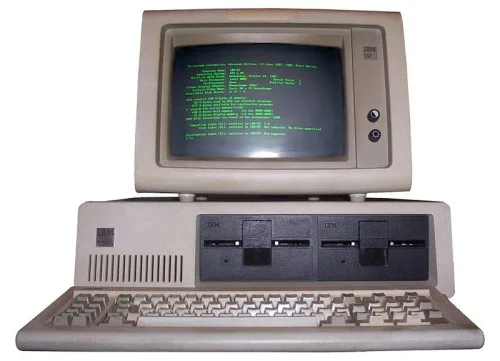
Of course that was the hardware, but how about DOS? Well for that we first need to talk about a naughty kid who, together with his friend was always hacking computers. That kid was called William Gates III, better known as Bill Gates.

His talent for computers was noticed by a company called MITS who hired Gates and his friend Paul Allen. Or rather Gates had the nerve to call them. MITS wanted them to create a BASIC interpreter as "OS" for their computer. Gates and Allen would later buy back the rights to this BASIC interpreter and gave birth to Microsoft in the process. The company which would turn both Gates and Allen into billionairs. Now I may go into the deep of Gates himself in another article, but I had to mention this, as Bill Gates played the most important role in... well everything...
Although I cannot resist showing this mug shot of Bill Gates. Those who hate (or fear) him always said he was a criminal (this mugshot is real, the "crime" was only a traffic rule violation, but who cares).
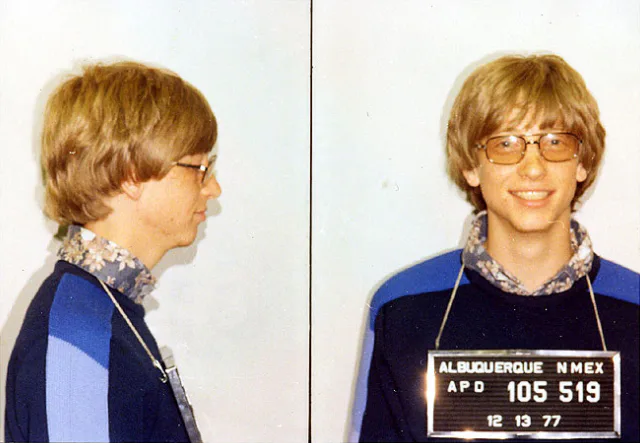
Back to the topic. Microsoft was hired by IBM to create the OS for the IBM computer. Originally this was not IBMs intention. They intended to create the OS themselves and Microsoft would only be hired to create a BASIC interpreter for the IBM computer. In the beginning all Microsoft did was creating BASIC interpreters (Just to note, the MSX computers had a BASIC interpreter by Microsoft, and AMIGA BASIC came from Microsoft too. I guess BASIC has a very special meaning for Microsoft), but IBM appeared to make one failure after another on this, so in the end the OS was put under the responsibility of Microsoft as well. I guess that was the one fatal mistake that would ruin the future of computers forever, so thanks a lot to that person working for IBM who came up with that mistake. Really the official "billion dollar mistake" (the invention of null-pointers) doesn't even compare, to that one, as this was the true beginning of Microsoft conquering the world with crap, and stolen software, I tell ya. Anyway, Microsoft developed PC-DOS, or "Personal Computer Disk Operating System". I guess the (false) name "PC" comes a bit from the fact that all default software that came with an IBM computer was prefixed "PC". Like "PC-Type" (word processor), "PC-File" (database), "PC-Calc" (spreadsheet), etc, etc, etc. So "PC-DOS" was a pretty obvious name for the operating system. The IBM PC did only have two disk drives, name A: and B: respectively. PC-DOS was mostly on the floppy put in drive A:, and so drive B: could easily be used to load the actual applications or to store the data. And now we can also note that this was the first product of which Microsoft only has the false honor to carry the tribute, but which they "stole". Bill Gates decided not to create an OS by himself. In stead he searched through registers of existing systems and found QDOS, and that was "Quick and Dirty Operating System", so that explains the D in DOS, and the letter got stuck there forever. Microsoft bought it and adepted it to IBMs wishes and TADAAAA! And QDOS was in term based om CP/M, so I guess we got a big way to trace back, eh? CP/M stood for "Control Program/Monitor", by the way, and it met its demise because the 64KB RAM limit it had kept bugging its users, and many applications created for CP/M were also available in MS-DOS. So I guess there Microsoft had one of its first "victims" 😜
Using DOS was fairly easy. Just type the name of the application and if a file with that name with either the .COM (command) or .EXE (executable) extension was found, the system would run that. And there was of course the .BAT (batch) file in which you could just give up a series of commands. It was never intended as a scripting language (despite some misguided beliefs I sometimes hear today). Due to the RAM limitations is was quite common to turn of the PC as soon as you were done with an applications, and restart it completely with a different floppy to run another program. Therefore systems often came with system disks on which only the two hidden files IO.SYS and MSDOS.SYS were present with the CLI interpreter COMMAND.COM allowing minimal access to DOS, and if a batch file named AUTOEXEC.BAT (auto execute) was present it would be executed on start, and mostly it was set to run the application. Think of it as and old Game Console like PlayStation 1 where you just turn of the console when you are done with a game replace the CD and turn it back on to play another game.
Directories (falsely referred to as "folders") were not supported by PC-DOS. The thought may have arised since Unix which is older than DOS heavily relies on directories and always did from the very start, however Unix was running on systems were large amounts of data were stored and read from, DOS only had floppies which could on a Double-Sided, Double-Density disk (which was the standard back then) only store 320KB. Yeah today if we see files that small, we'd think it's a virus, but back then that was more than most people could imagine. So need for directory support was not really deemed needed most likely.
Now where it went wrong.... Microsoft and not IBM owned the copyrights for PC-DOS. Now this was interesting. And so PC-DOS 2.0 was renamed MS-DOS (with MS standing for Microsoft) and the begin of total ruination was a fact. The most notable changes, where the support of directories, the possibility to read and write to multiple files at the same time, a printer buffer and an ANSI driver. And now other computer brands could be made compatible with MS-DOS as well. Like I said, my first touch with MS-DOS was on a Tulip computer, but a family I knew had a DOS computer from the brand Victor. And very soon a computer came to my home from the brand PACO. IBM did kinda lose the imperium they were hoping for and it all went to Microsoft. Nearly all PCs came with MS-DOS by default. In later time a competitor did pop up. DR-DOS... Some people called it "doctor DOS", but DR was actually standing for Digital Research, the company behind it. Although DR-DOS was actually better than MS-DOS, the latter was considered the standard, so DR-DOS could never really harm MS-DOS. Aside from this I've also seen DOS change, with many features, and frankly when I look on this, I've seen things go too quickly, so many things brought to the market too quickly would leave their marks to this very day. Particularly RAM was an issue. When applications (games in particular) needed more than 640KB there was an issue, as hardware doesn't permit it. That's actually still an issue today, but all modern OSes were written in a way that cleverly hides that, so nobody cares anymore.
The last versions of DOS to be recognized as DOS are DOS 6.0, 6.2, and 6.21 and 6.22. The latter two were only with the DoubleSpace tool removed, as that was a stolen product from Stack Electronics (the original being called Stacker), so Stack Electronics successfully sued Microsoft forcing them to remove it.
DOS 7.0 has existed, but it actually always came with Windows 95, and was configured to run Windows immediately. So technically contrary to popular belief, Windows 95 did still require DOS and was still a DOS application, but the fact that MS-DOS was still loaded was cleverly hidden.
The final version of DOS was version 8.0, cleverly hidden in Windows ME, but the traces to it were only to be found by real whizkids who knew what they were doing, and there the curtain officially fell for DOS.
Now as a way to preserve history Microsoft has released the entire source code of MS-DOS 1 and 2 on GitHub.
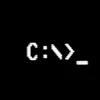


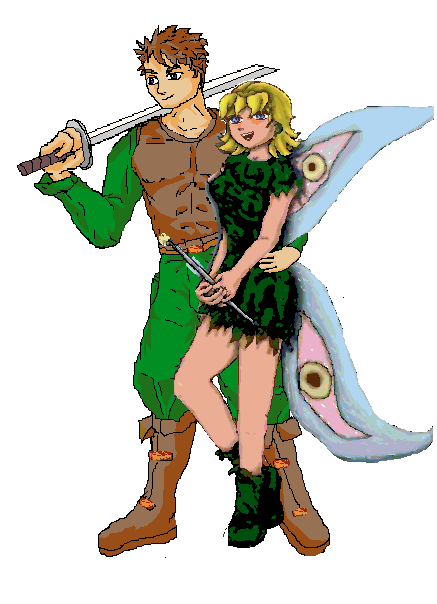
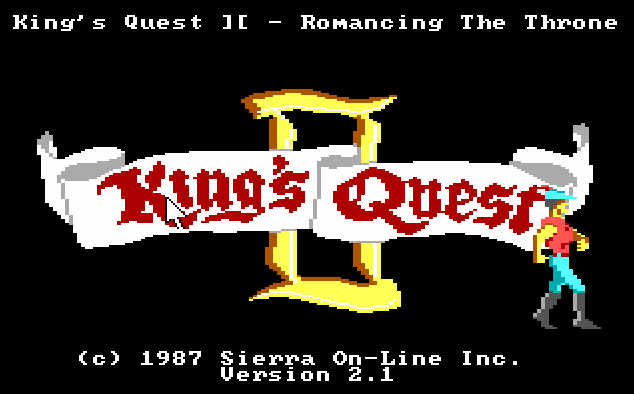
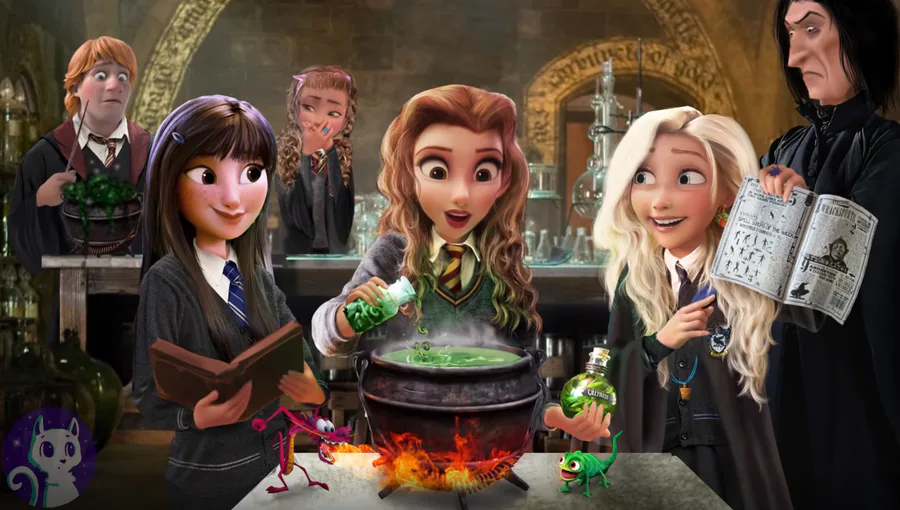
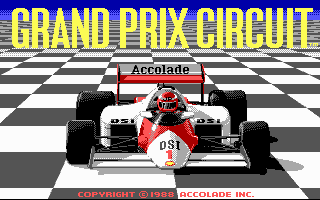




0 comments